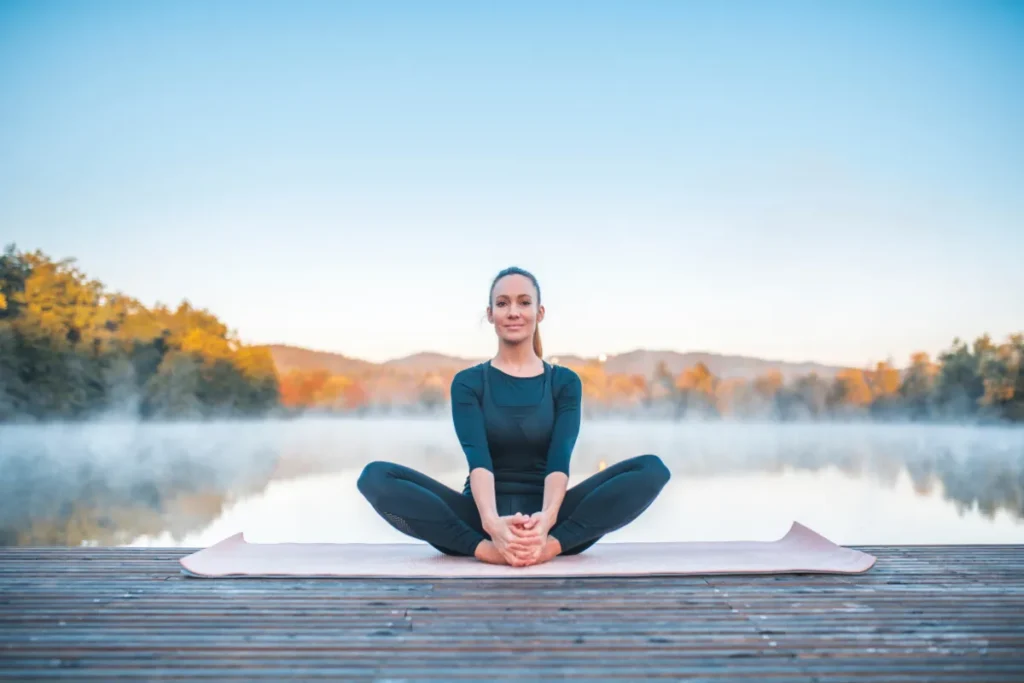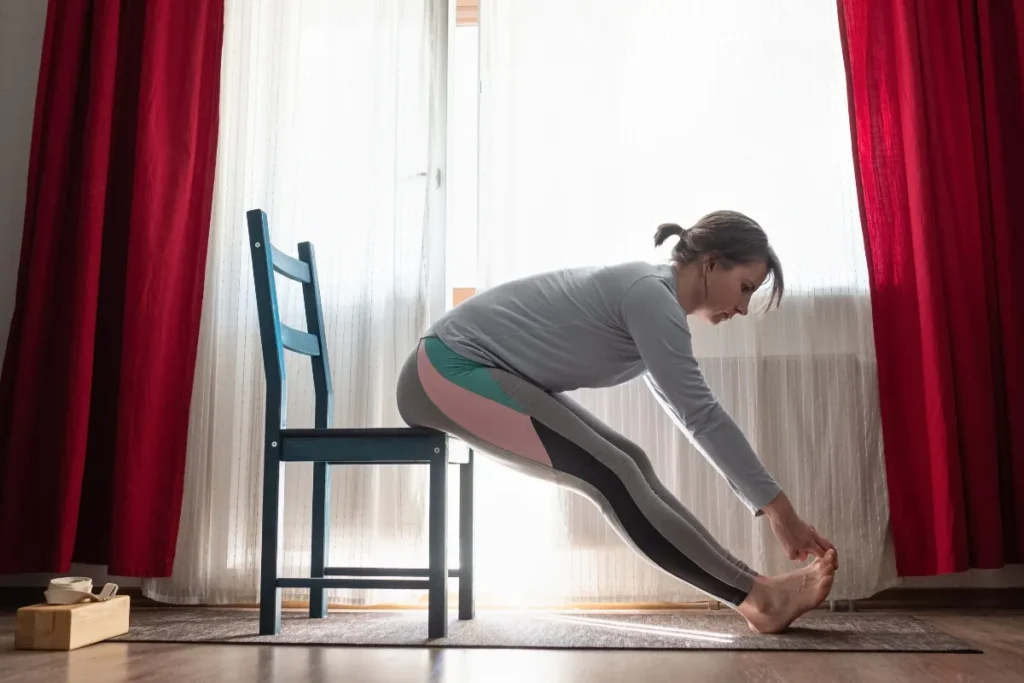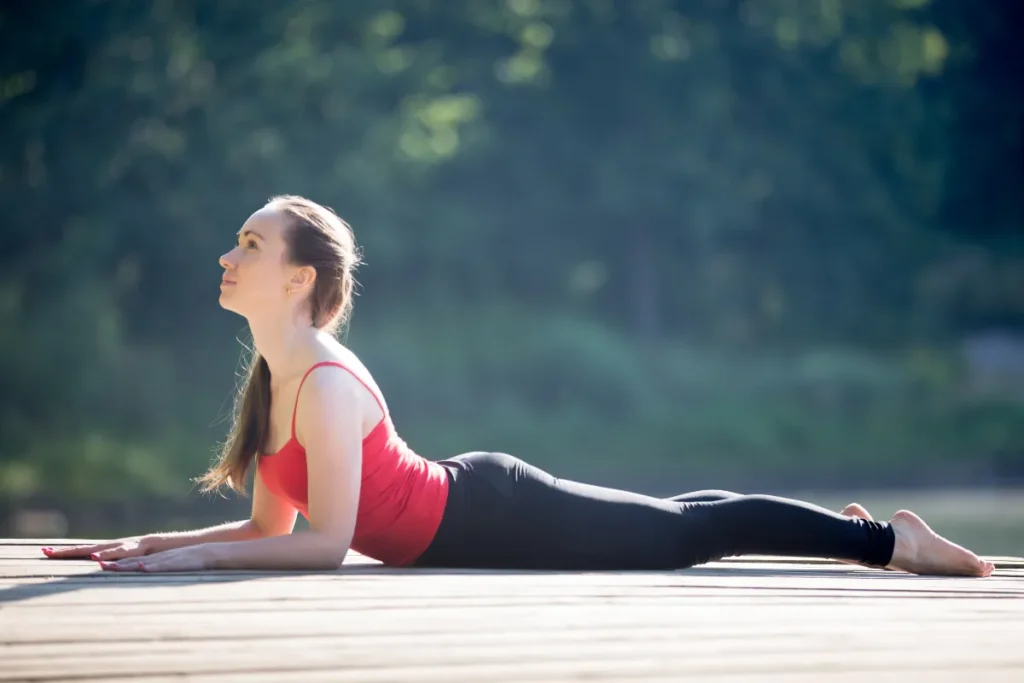Introduction:
In a world marked by constant hustle and bustle, finding moments of stillness and peace becomes paramount for maintaining overall well-being.
Amidst the chaos of modern life, Yin Yoga emerges as a powerful tool to reset both body and mind.
Unlike its more dynamic counterparts, Yin Yoga focuses on passive, long-held poses that target the deep connective tissues of the body, fostering relaxation, flexibility, and inner awareness.
In this article, we embark on a journey through a selection of Yin Yoga poses, exploring their benefits and the profound effects they have on restoring equilibrium to the body and mind.
Understanding Yin Yoga:
Yin Yoga traces its roots back to ancient Chinese Taoist traditions, where it was believed that holding poses for extended periods could stimulate the flow of energy (Qi) through the body’s meridian pathways.
Unlike Yang practices, which emphasize muscular engagement and movement, Yin Yoga invites practitioners to surrender into stillness, allowing gravity to gently stretch and release tension in the connective tissues.
Yin Yoga operates on the principle of “finding your edge,” where individuals are encouraged to explore a sensation of mild discomfort without pushing into pain.
By holding poses for typically three to five minutes or longer, Yin Yoga promotes deep relaxation and a sense of introspection, making it a perfect complement to more active lifestyles or vigorous yoga practices.
The Benefits of Yin Yoga:
Enhanced Flexibility:
Yin Yoga targets the dense connective tissues, such as ligaments, tendons, and fascia, promoting increased flexibility and joint mobility over time.
By holding poses for extended periods, practitioners gradually release deep-seated tension and stiffness, allowing for greater range of motion.
Stress Reduction:
The slow, meditative nature of Yin Yoga induces a state of deep relaxation, activating the parasympathetic nervous system and reducing stress levels.
Through conscious breathwork and mindful awareness, practitioners cultivate a sense of inner calm and tranquility, counteracting the effects of daily stressors.
Improved Joint Health:
Regular practice of Yin Yoga helps to maintain the health and integrity of the joints by nourishing the surrounding connective tissues.
By gently stretching and compressing the joints in various poses, Yin Yoga supports joint lubrication and mitigates the risk of degenerative conditions such as arthritis.
Mental Clarity and Focus:
Yin Yoga serves as a gateway to mindfulness, offering a space for self-reflection and inner exploration.
As practitioners settle into stillness, they develop heightened awareness of their thoughts, emotions, and bodily sensations, fostering mental clarity and sharpened focus.
Balancing Energy Flow:
In traditional Chinese medicine, it is believed that the body’s vital energy, or Qi, flows through meridian channels, influencing overall health and well-being.
By targeting specific meridians in Yin Yoga poses, practitioners can harmonize the body’s energy flow, promoting balance and vitality.
Now, let us delve into a selection of Yin Yoga poses that can help reset your body and mind:
Butterfly Pose (Baddha Konasana):

Sit on the mat with the soles of your feet together and knees falling outwards.
Gently fold forward from the hips, allowing your spine to lengthen and your forehead to release towards the ground.
Hold the pose for 3-5 minutes, focusing on deep belly breaths and surrendering into the stretch.
Butterfly Pose opens the hips and groin, releasing tension stored in these areas and promoting relaxation.
Dragon Pose (Yin Variation):

From a low lunge position, lower your back knee to the ground and walk your front foot towards the outer edge of the mat.
Sink your hips down and forward, feeling a deep stretch in the hip flexors and quadriceps.
Support yourself with blocks or props if needed, and hold the pose for 3-5 minutes on each side.
Dragon Pose targets the hip flexors and quadriceps, relieving tightness in the front of the hips and thighs.
Sphinx Pose:

Lie on your belly with your forearms on the ground, elbows stacked underneath your shoulders.
Press into your forearms to lift your chest and gaze forward, lengthening through the spine.
Hold the pose for 3-5 minutes, focusing on deep diaphragmatic breathing and softening tension in the lower back.
Sphinx Pose gently stretches the spine and opens the heart center, promoting a sense of openness and vulnerability.
Melting Heart Pose (Anahatasana):

From a tabletop position, walk your hands forward and lower your chest towards the ground, keeping your hips stacked over your knees.
Rest your forehead or chin on the mat and allow your heart to melt towards the earth.
Hold the pose for 3-5 minutes, surrendering into the stretch and releasing tension in the shoulders and chest.
Melting Heart Pose deeply stretches the shoulders and chest, encouraging emotional release and heart opening.
Supported Fish Pose (Matsyasana Variation):

Place a bolster or folded blanket lengthwise on the mat and sit in front of it with your knees bent and feet flat on the floor.
Lie back over the bolster, allowing it to support your spine and head.
You can place a block under your head for additional support if needed.
Relax your arms by your sides with palms facing up and close your eyes.
Hold the pose for 5-10 minutes, focusing on slow, rhythmic breathing and surrendering into the support of the props.
Supported Fish Pose gently stretches the chest and opens the heart, relieving tension in the upper back and promoting deep relaxation.
Conclusion:
Yin Yoga offers a profound journey inward, inviting practitioners to slow down, soften, and connect with the present moment.
Through a series of passive, long-held poses, Yin Yoga resets the body and mind, fostering flexibility, relaxation, and inner awareness.
By incorporating these Yin Yoga poses into your regular practice, you can cultivate a sense of balance and harmony, both on and off the mat.
Remember, the true essence of Yin Yoga lies not in the poses themselves but in the mindful presence and intention that you bring to each moment of stillness.
Embrace the opportunity to surrender, let go, and rediscover the peace that resides within.
Practice gratitude for the gift of stillness, for it is in these moments of quietude that we find our truest selves.

